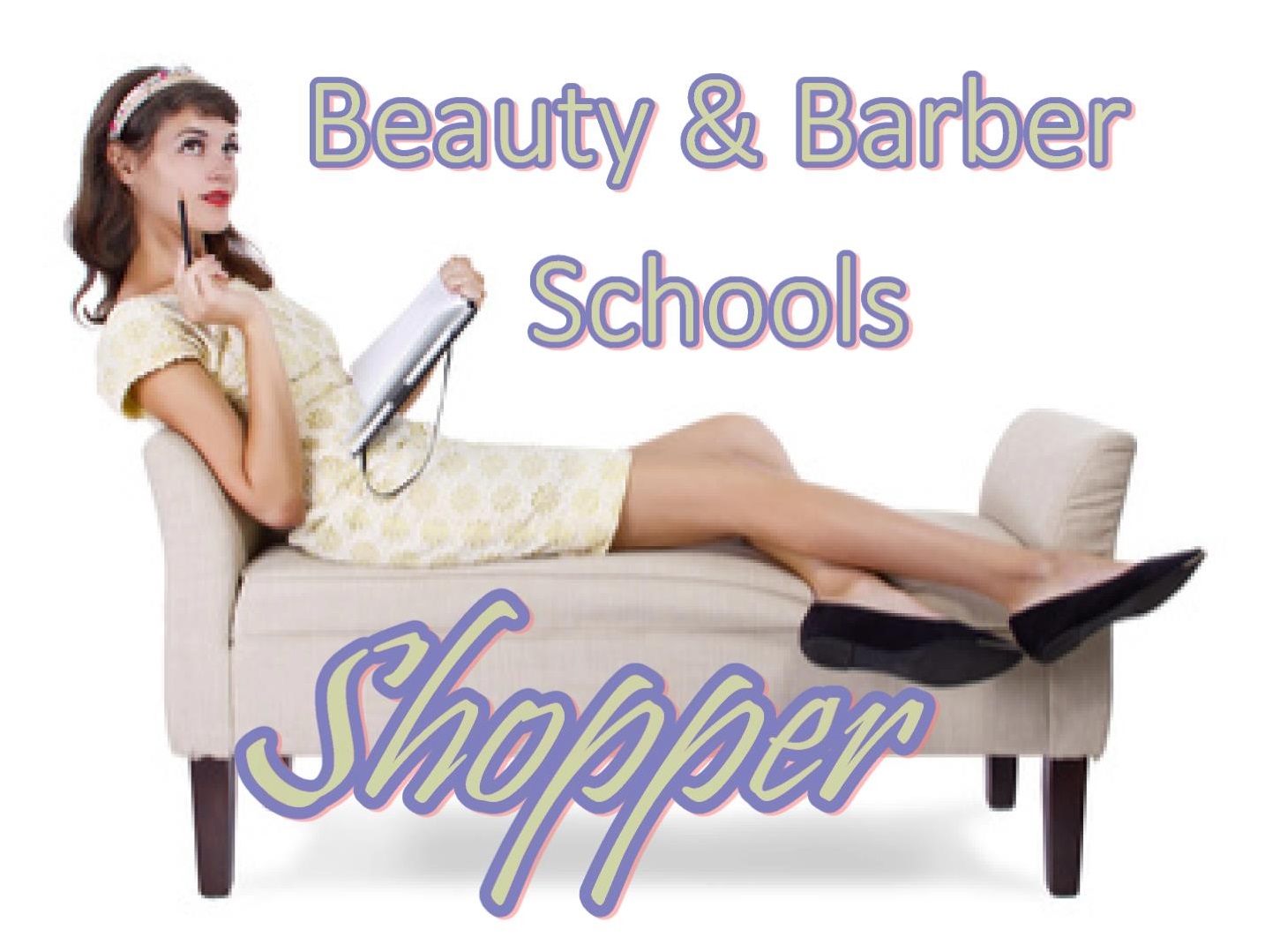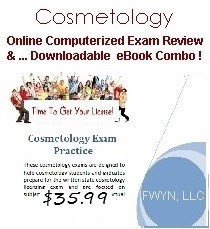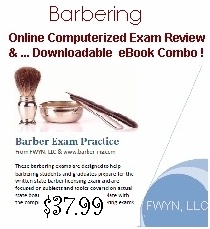
✂ Cosmetology & Barber Board Prep eBooks ✂ Cosmetology & Barber Articles ✂ Cosmetology History ✂ Financial Aid ✂ Questions For School Recruiters ✂ Cosmetology Exams ✂ Barber Exams ✂ Esthetics Exams ✂ Manicurist Exams ✂ Nautural Hair & Braiding Exams ✂ FWYN LLC ✂ MARYLAND Board of Cosmetology and Barbering Info ✂ Free MD Exams ✂
Click one of the MARYLAND cities to find a beauty or barber school in MARYLAND. Click the city then send a request to a listed school to find out more information. When the addmissions representative contacts you, ask about the school tuition ♦ Are all costs included in the tuition? ♦ What curriculum do you teach? ♦ What grade average do I need to maintain to graduate? ♦ Do you have an attendance policy? ♦ How long does it take to complete your course? ♦ Do you have a website? ♦ How large are the classes? ♦ Are there any up-front fees I need to know about? ♦ Can you mail me information on your school before I take a tour? ♦ Is there financial aid available? ♦ Is there an entrance exam? ♦ What can you tell me about the instructors? ♦ When was the college established? ♦ Do you have part time and evening classes? ♦
City: Annapolis, MD
City: Baltimore, MD
City: Bladensburg, MD
City: Dundalk, MD
City: Ellicott City, MD
City: Frederick, MD
City: Gaithersburg, MD
City: Hagerstown, MD
City: Hillcrest Heights, MD
City: Laurel, MD
City: New Carrollton, MD
City: Reisterstown, MD
City: Salisbury, MD
City: Sivler Spring, MD
City: Temple Hills, MD
City: Timonium, MD
City: Waldorf, MD
City: Westminster, MD
 A school must have accreditation from an accrediting body recognized by the U.S. Department of Education to be eligible to participate in the administration of federal student aid programs. The schools on this Best Beauty Schools List are accredited by NACCAS, the National Accrediting Commission of Cosmetology Arts and Sciences which is recognized by the U.S. Department of Education, therefore many of these beauty schools do participate in Federal Financial Aid. Not all Beauty Schools participate in the same financial aid programs, however � so be sure to ask the beauty school recruiter what type of financial aid they participate in.
A school must have accreditation from an accrediting body recognized by the U.S. Department of Education to be eligible to participate in the administration of federal student aid programs. The schools on this Best Beauty Schools List are accredited by NACCAS, the National Accrediting Commission of Cosmetology Arts and Sciences which is recognized by the U.S. Department of Education, therefore many of these beauty schools do participate in Federal Financial Aid. Not all Beauty Schools participate in the same financial aid programs, however � so be sure to ask the beauty school recruiter what type of financial aid they participate in.
PELL Grant:Some Beauty Schools participate in the federal PELL grant. PELL grants are the foundation of federal student financial aid, to which aid from other federal and nonfederal sources might be added. PELL grants are generally awarded only to students who have not earned a bachelor�s or graduate degree. The amount of the grant awards can change yearly. To find out if you qualify for a PELL grant, you would need to complete a FAFSA application. FAFSA stands for Free Application for Federal Student Aid, so never let anyone charge you for submitting one! The government uses a formula that includes household income, number of family members, how many family members are attending college, the cost of attendance, whether you are a full or part time student, whether you attend school for a full academic year or less � and several other factors to determine who qualifies for the PELL grant and how much PELL grant they receive.
Some Beauty Schools participate in Federal student loan programs. Student loans, unlike grants, must be repaid, with interest. You cannot have these loans canceled because you didn�t like the education you received, didn�t get a job in your field of study or because you are having financial difficulty. Loans are legal obligations, so before you take out a student loan, think about the amount you�ll have to repay over the years. You may want to ask you beauty school recruiter if they participate in any of the following federal loan programs:
 Federal Perkins Loans:Federal Perkins loans are made through participating schools to undergraduate, graduate and professional degree students. They are offered by participating schools to students who demonstrate financial need. Students must be enrolled full-time or part-time. The federal Perkins Loans are repaid by you to your school.
Federal Perkins Loans:Federal Perkins loans are made through participating schools to undergraduate, graduate and professional degree students. They are offered by participating schools to students who demonstrate financial need. Students must be enrolled full-time or part-time. The federal Perkins Loans are repaid by you to your school.
Stafford Loans: (subsidized and unsubsidized) Stafford Loans are for undergraduate, graduate and professional degree students. You must be enrolled as at least a half-time student to be eligible for a Stafford loan. There are two types of Stafford loans: subsidized and unsubsidized. You must have financial need to received a subsidized Stafford loan. Financial need is not a requirement to obtain an unsubsidized Stafford loan. The U.S. Department of Education will pay (subsidize) the interest that accrues on subsidized Stafford loans during certain periods. These loans are made through one of two U.S. Department of Education programs: The William D. Ford Federal Direct Loan Program (borrowing directly from the U.S. Department of Education), or the Federal Family Education Loan program (Private lenders provide the funds that are guaranteed by the Federal Government). The maximum Stafford Loan amount you can borrow each academic year depends on your academic level in school and whether you are a dependent or independent student.
 PLUS loans: Parents of dependent students and students pursuing a graduate or professional degree can borrow from the PLUS Loan program. The terms and conditions applicable to parent PLUS Loans (made to parents of dependent students) also apply to PLUS Loans made to graduate and professional degree students. These terms and conditions include: a requirement that the applicant not have an adverse credit history; a repayment period that begins on the date of the last disbursement of the loan; and a fixed interest rate. As with PLUS Loans made to parent borrowers, eligible graduate and professional degree students may borrow under the PLUS program up to their cost of attendance, minus other financial aid received. The PLUS applicant and the student must be a United States citizen or eligible noncitizen, not be in default on a federal student loan, and not owe a refund on a federal education grant.
PLUS loans: Parents of dependent students and students pursuing a graduate or professional degree can borrow from the PLUS Loan program. The terms and conditions applicable to parent PLUS Loans (made to parents of dependent students) also apply to PLUS Loans made to graduate and professional degree students. These terms and conditions include: a requirement that the applicant not have an adverse credit history; a repayment period that begins on the date of the last disbursement of the loan; and a fixed interest rate. As with PLUS Loans made to parent borrowers, eligible graduate and professional degree students may borrow under the PLUS program up to their cost of attendance, minus other financial aid received. The PLUS applicant and the student must be a United States citizen or eligible noncitizen, not be in default on a federal student loan, and not owe a refund on a federal education grant.